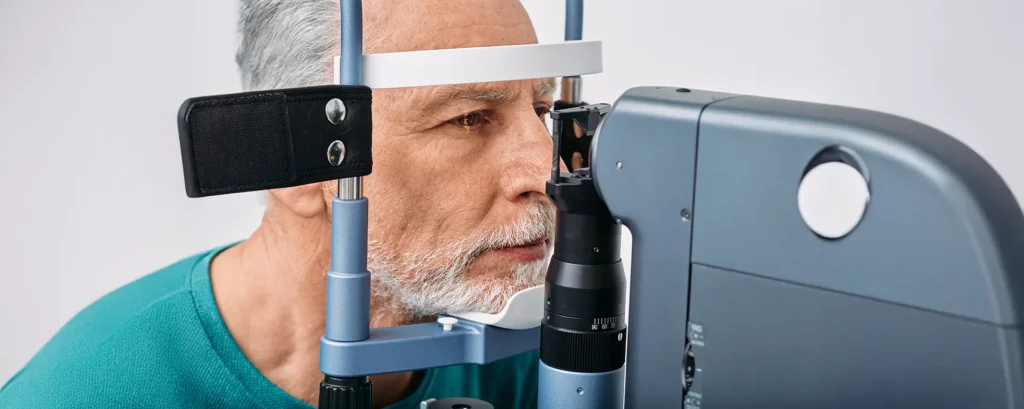If you’re preparing for cataract surgery or even refractive lens exchange, you’ll soon discover that the choice of intraocular lens (IOL) is just as important as the operation itself. The lens you select will become a permanent part of your eye, shaping how you see the world every single day. With so many global brands—Alcon, Johnson & Johnson, Zeiss, Bausch + Lomb—it’s easy to overlook that Britain has its very own lens manufacturer with a rich history: Rayner.
Rayner isn’t just another player in the field; it produced the very first intraocular lens in the world. Since then, it has continued to refine its technology, developing a range of lenses that surgeons here in the UK and internationally trust for clarity, stability, and consistent performance. In this guide, I’ll walk you through Rayner’s story, its lens portfolio, how the optics perform in daily life, and how Rayner stacks up against the competition.
By the end, you should have a clear, down-to-earth understanding of whether a Rayner lens could be the right choice for your cataract surgery.
The Origins of Rayner: Why Its History Still Matters Today
Rayner’s heritage is unique. The company manufactured the world’s first intraocular lens for Sir Harold Ridley in 1949 at St Thomas’ Hospital in London. This was a pioneering step that changed cataract treatment forever. Instead of thick spectacles or uncomfortable contact lenses after surgery, patients could now have a permanent implant inside their eye.
This innovation didn’t just place Rayner at the forefront of ophthalmology—it set the blueprint for all modern IOLs that came after. The company has stayed true to its roots by keeping design, development, and manufacturing in the UK, specifically in Worthing, West Sussex.
That matters more than you might think. Local production allows Rayner to maintain exceptionally tight quality control, ensuring that surgeons get consistent lenses time after time. And when surgeons can rely on a product’s stability and predictability, patients naturally benefit with better outcomes.
What Makes Rayner Different From Other Lens Brands?

Most major IOL companies today are global corporations headquartered in the United States, Germany, or Japan. Rayner is different—it’s the only UK-based lens manufacturer. That alone carries weight with many UK surgeons who value homegrown expertise, quick support, and the reassurance of British manufacturing standards.
Rayner also tends to innovate in ways that address practical patient needs rather than chasing abstract “lab perfection”. For example, while some brands focus heavily on multifocal optics that can sometimes cause glare and halos, Rayner introduced the RayOne EMV—a lens designed to give patients a smooth blend of distance and intermediate vision without the side effects that can come with more aggressive designs.
In short, Rayner positions itself as a company making lenses for real people’s lives rather than just for ideal test conditions.
The RayOne Platform: The Core of Rayner’s Lens Range
The RayOne family is the backbone of Rayner’s portfolio. Within this platform, you’ll find a wide selection of lens options, each designed for different needs.
The RayOne Aspheric Monofocal is built for crisp, reliable distance vision when targeted correctly. This is the workhorse choice for patients who don’t mind wearing reading glasses afterwards.
The RayOne Toric is specifically designed for patients with astigmatism, correcting irregular corneal curvature at the same time as removing the cataract. That often means sharper vision without the need for glasses for distance.
The RayOne EMV (Enhanced Monovision) is a relatively new design that balances distance and intermediate focus. The idea is to improve on traditional monovision (where one eye is set for distance and the other for near) by using lens optics that extend the depth of focus. This means a more natural transition between near and far, and less strain for patients.
The RayOne Trifocal is for those who want spectacle independence at near, intermediate, and far. Like other premium multifocal lenses, this comes with the potential for glare or halos in some patients, but many find the freedom from glasses well worth it.
The RayOne platform also includes hydrophobic material options, which are designed to resist glistenings—tiny microvacuoles that can scatter light in some lenses over time. Having a glistening-free material is a practical advantage for maintaining clarity long term.
The Sulcoflex Platform: Supplementary Lenses for Flexibility
One of Rayner’s standout innovations is the Sulcoflex system. Unlike standard IOLs, these are supplementary lenses placed in the sulcus (the natural groove in front of the primary implant).
This allows surgeons to fine-tune or even enhance a patient’s vision after the main surgery. For example, if a patient has a small residual refractive error after cataract surgery, a Sulcoflex lens can correct it without replacing the primary implant. If someone wants presbyopia correction after initially choosing a monofocal, a Sulcoflex multifocal add-on can be inserted. And if astigmatism remains, a Sulcoflex toric can be added.
This modular approach gives flexibility that most other brands don’t offer. Instead of being locked into one decision at the time of cataract surgery, patients and surgeons have options later.
Rayner’s Approach to Materials and Design
Materials are crucial in IOL performance. Rayner uses hydrophobic acrylic with a specific claim: it’s free from glistenings, which are small fluid-filled inclusions that can scatter light in some other hydrophobic lenses. By preventing glistenings, Rayner aims to maintain clarity and contrast over the long term.
The haptics—the little arms that hold the lens in place—are also carefully engineered. Rayner lenses use a single-piece design with smooth, rounded haptics that make insertion easier and help ensure stability in the capsular bag.
For patients, this translates to lenses that stay centred, perform consistently, and resist degradation over time.
How Do Rayner Lenses Compare With Other Brands?

This is the big question most patients have. Let’s look at Rayner compared with the major global players.
Alcon has the broadest range and the longest-established premium trifocal. Rayner competes here with its own trifocal but differentiates with designs like EMV, which Alcon doesn’t have.
Johnson & Johnson offers advanced optics and a strong toric range. Rayner holds its own, particularly with EMV and Sulcoflex, which J&J doesn’t match.
Zeiss is famous for optical precision. Rayner matches this in everyday clarity and adds flexibility with add-on lenses.
Bausch + Lomb has unique accommodative designs, though with mixed results. Rayner’s designs are often seen as more reliable in real-world outcomes.
In short, Rayner might not have the global marketing power of these brands, but it competes head-to-head in technology and often stands out in patient-focused design.
Patient Benefits of Choosing a Rayner Lens
So, what does all this mean for you as a patient? Here are the real-world benefits.
Consistency and clarity come from the glistening-free material. Patients can feel confident their vision won’t degrade due to microvacuoles forming in the lens.
UK-based support is another advantage. Surgeons often prefer Rayner precisely because they can rely on local supply chains and customer support.
Flexibility is a standout strength. With Sulcoflex, patients aren’t locked into one decision forever and can adapt their vision later if their needs change.
Reduced side effects are another focus. Designs like EMV aim to balance spectacle independence with fewer halos and glare compared to some other multifocal options.
Finally, there is heritage. Rayner is a company that’s been making lenses longer than anyone else, and that kind of track record brings peace of mind.
FAQs About Rayner Cataract Lenses
1. Are Rayner lenses as good as international brands?
Rayner lenses are considered just as good as those made by the large international manufacturers, and in some cases they offer unique benefits. While companies like Alcon, Johnson & Johnson, and Zeiss are better known globally, Rayner holds its own with innovative designs such as the EMV lens and the Sulcoflex add-on system. Surgeons in the UK often recommend Rayner because the lenses deliver consistent clarity and stability, and the company’s local base provides additional reassurance when it comes to quality and supply.
2. Do Rayner lenses last a lifetime?
Yes, Rayner lenses are designed to be permanent. Once a cataract lens is implanted, it does not wear out or require replacement under normal circumstances. The materials used are biocompatible and resistant to long-term degradation, so patients can expect their vision to remain stable for life. Unlike natural lenses, these implants will not become cloudy again, which means the benefits of surgery with a Rayner lens are intended to last forever.
3. Will I still need glasses with a Rayner lens?
Whether or not you need glasses after surgery depends on the type of Rayner lens you choose. A standard monofocal lens usually means you will still need reading glasses, while a toric lens can reduce or eliminate the need for distance glasses if you have astigmatism. Patients who opt for a trifocal or EMV lens often find they can function very well without glasses for most everyday tasks, though in some cases small amounts of spectacle use may still be needed for fine detail.
4. Do Rayner lenses cause glare or halos?
Like all modern intraocular lenses, Rayner lenses can sometimes create visual side effects such as halos or glare, particularly in their trifocal models. However, many patients adapt to these phenomena quickly and report that they become far less noticeable with time. The RayOne EMV design was created specifically to reduce these side effects while still giving patients more range of vision than a monofocal lens. Surgeons often recommend this option for people who want balance between freedom from glasses and visual comfort.
5. Are Rayner toric lenses good for astigmatism?
Rayner toric lenses are highly effective at treating astigmatism during cataract surgery. By correcting irregular corneal curvature at the same time as removing the cataract, they often provide patients with much sharper vision without the need for glasses for distance. The design is stable and predictable, meaning the lens stays properly aligned inside the eye. This reliability is one of the reasons why surgeons are confident in using Rayner toric models for patients with corneal astigmatism.
6. Can I change my Rayner lens later?
One of the unique features of Rayner’s offering is the Sulcoflex platform, which allows additional lenses to be placed in front of the primary implant. This means that if your vision changes over time, or if you want to enhance your range of focus after initially choosing a monofocal, a supplementary lens can be added without replacing the original implant. This flexibility makes Rayner particularly appealing for patients who may want more options later in life, without the risks associated with removing an existing IOL.
7. Are Rayner lenses safe?
Rayner lenses are very safe and are manufactured under strict British and international regulatory standards. The company has a long track record in ophthalmology and has been trusted by UK surgeons for decades. Every lens is produced using materials designed to remain stable inside the eye, and the smooth haptic design helps ensure proper positioning. As with any surgery, there are risks involved, but the safety profile of Rayner lenses is excellent and compares favourably with any of the other major brands.
8. Are Rayner lenses available worldwide?
Although Rayner is a UK-based manufacturer, its lenses are exported to many countries and are used by surgeons across Europe, Asia, and other regions. The company has a growing international presence and continues to expand its reach. For UK patients, this worldwide use is an additional sign of trust in the brand. For patients abroad, it also means they may encounter Rayner lenses as a recommended option even outside the UK.
9. How do Rayner EMV lenses compare with multifocals?
Rayner EMV lenses are designed as a middle ground between monofocal and multifocal lenses. Unlike a full multifocal, which provides strong near vision but can cause more glare and halos, the EMV lens gently extends the depth of focus to give better intermediate vision while maintaining clarity at distance. This means patients often enjoy a smoother, more natural visual experience with fewer side effects. The trade-off is that EMV lenses may not deliver the same strong near focus as trifocal designs, but for many people the comfort is a better balance.
10. Why do some surgeons prefer Rayner?
Surgeons often prefer Rayner lenses because they combine reliable performance with practical innovations. The company’s local UK base gives them confidence in quality control and support, while designs like the Sulcoflex add-on system and the EMV lens provide tools to solve real-world patient challenges. Rayner also has a long-standing reputation for consistency, which is crucial when surgeons are aiming for precise outcomes. For many, this trust and predictability make Rayner a preferred choice alongside or even above the big global brands.
Final Thoughts
Rayner lenses combine heritage, British manufacturing quality, and modern optical design in a way few other brands can match. From standard monofocals to innovative solutions like EMV and Sulcoflex, the company offers options that genuinely improve quality of life for patients.
If you’re considering cataract surgery in the UK, it’s worth discussing Rayner with your surgeon. Their lenses may not have the global advertising budgets of the big players, but what they do have is decades of trust, local expertise, and a track record of making lenses that simply work.
For patients at London Cataract Centre, our team regularly works with Rayner lenses as part of personalised treatment plans—helping you choose the right implant for your lifestyle, not just your prescription.
References
- García-Bella, J., Fernández, A. and Llovet-Rausell, A., 2024. Visual and refractive outcomes after bilateral implantation of RayOne EMV: prospective study. Journal of Ophthalmic Research, unpublished data via PMC. Available at: https://pmc.ncbi.nlm.nih.gov/articles/PMC11146183/
- Llovet-Rausell, A., Navalón-Tortosa, J., Druchkiv, V., Coloma-Bockos, J. and Moya-Roca, J., 2025. Patient satisfaction and quality of vision after bilateral implantation of enhanced monofocal IOL in mini-monovision. Eye and Vision, 12, Article 23. Available at: https://eandv.biomedcentral.com/articles/10.1186/s40662-025-00439-z
- Falzon, K. and Stewart, O.G., 2012. Correction of undesirable pseudophakic refractive error with the Sulcoflex (Rayner) intraocular lens. Journal of Refractive Surgery, 28(9), pp.614–620. Available via PubMed: https://pubmed.ncbi.nlm.nih.gov/22947288/
- Verdonck, T., 2021. Clinical and surgical outcome of a supplementary multifocal Rayner Sulcoflex IOL in combination with bag-in-the-lens IOL. Ophthalmic Surgery, Lasers and Imaging Retina, 52(6). PMID: 33326968. Available at: https://pubmed.ncbi.nlm.nih.gov/33326968/
- Khoramnia, R., Salgado, E., Auffarth, G.U. and Schmitz, A., 2025. From “piggyback” to supplementary sulcus-fixated IOLs: review and evidence. Graefe’s Archive for Clinical and Experimental Ophthalmology. Available at: https://link.springer.com/article/10.1007/s00417-024-06618-3

